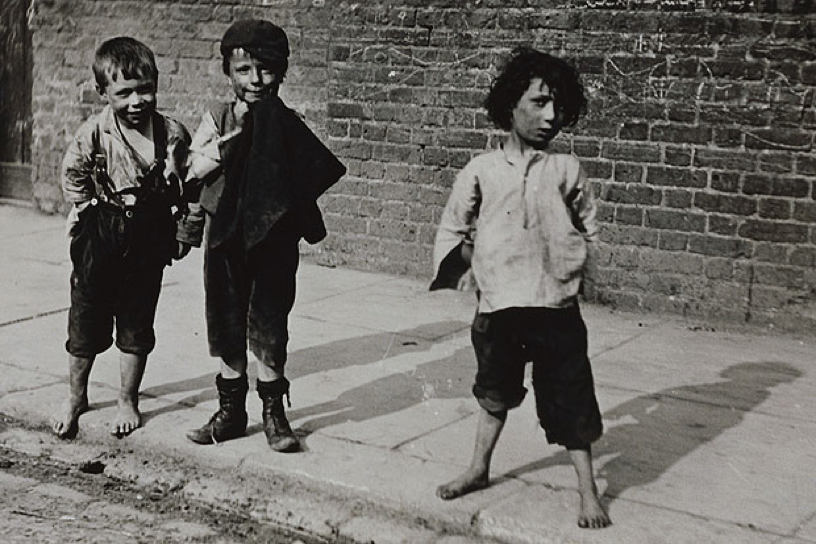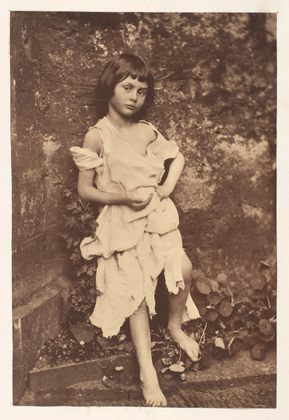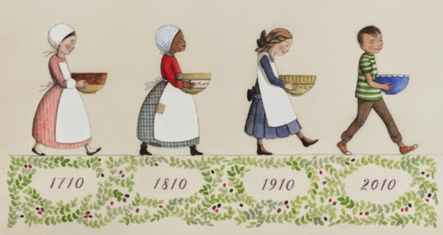|
In the early hours of the morning of May 22, 1867 Charles Dodgson worked feverishly on a one-hundred line poem that opposed the Vice-Chancellor of Oxford’s Decree of April 29 calling for the conversion of a park in North Oxford into a cricket pitch. The poem he wrote is a parody of Oliver Goldsmith’s “The Deserted Village” (1770). It should not surprise us that Dodgson framed his protest in this parodic form, but why did he care, what did he have against the sport of cricket, and what can we learn from this controversy about his conception of childhood? First of all, he laments the artificial levelling of the naturally rolling grounds of the park. Adown thy glades, all sacrificed to cricket, Thy hollow-sounding bat now guards the wicket; Sunk are thy mounds in shapeless level all, Lest aught impede the swiftly rolling ball; And trembling, shrinking from the fatal blow, Far, far away thy hapless children go. The destruction of this natural space has displaced its natural inhabitants, children. In the romantic tradition, Dodgson identifies children here as a part of nature and as vulnerable to Victorian “progress.” But the children he describes are not privileged drawing room children like Alice Liddell, daughter of the Dean of Christ Church College, but “urchins.” He deplores the loss of the “charms” belonging to, The never-failing brawl, the busy mill Where tiny urchins vied in fistic skill-- (Two phrases only have that dusky race Caught from the learned influence of the place; Phrases in their simplicity sublime, “Scramble a copper!” “Please, Sir, what’s the time?”) These round thy walks their cheerful influence shed; These were they charms—but all these charms are fled. A man of his age and an essentialist, Dodgson conflates race and class when he refers to the unwashed, coal smudged children as “that dusky race.” But more importantly he idealizes the freedom of the brawling, fighting “urchins” whom he considers much closer to nature than the drawing room child. This idealization helps to explain why he photographed Alice barefoot dressed as a beggar. Supervised by her governess, Miss Prickett, and shuffled between lessons and fittings by her ambitious mother, Alice could only pretend to be a child of nature.
Of course it is deeply problematic to idealize and prettify childhood poverty, but Dodgson was on to something in opposing the overly structured lives of middle and upper class Victorian children. In a letter to May Forshall, one of his child friends, he wrote: “Do you ever play at games? Or is your idea of life “breakfast, lessons, dinner, lessons, tea, lessons, bed, lessons, breakfast, lessons,” and so on? It is a very neat plan of life and almost as interesting as being a sewing machine or a coffee grinder.” Just the word coffee grinder evokes images of Dickens’ Mr. Gradgrind stuffing facts down little childrens’ throats and destroying their imaginations. When he asks Miss Forshall if she plays at “games,” Dodgson does not mean exclusive, organized sports like cricket, which he associates with wealth and privilege. Ill fares the place, to luxury a prey, Where wealth accumulates, and minds decay; Athletic sports may flourish or may fade, Fashion may make them, even as it has made; But the broad Parks, the city’s joy and pride, When once destroyed can never be supplied! Rather he means the kind of imaginative games that children invent on their own, games without “pavilions” and “scorers’ tents,” games without winners and losers, games without complicated and absurd rules. Dodgson was obsessed with childhood and children because they represented for him freedom from the oppressive constraints of Victorian life. They represented freedom from finicky indoor spaces, freedom from ticking wristwatches, freedom from attention to manners and dress, and finally freedom from the burdens of his academic work.
90 Comments
In the process of reporting on food books for the class I am taking on non-fiction picture books taught by the awesome Candice Ransom, I found one book that is good enough to eat--A Fine Dessert: Four Centuries, Four Families, One Delicious Treat written by Emily Jenkins and illustrated by Sophie Blackall. The book depicts four different families making blackberry fool in four different centuries, 1710, 1810, 1910 and 2010. The concept is simple and straightforward and at the same time sophisticated and elegant. First the book demonstrates how cooking technology has changed over time. The first family beats cream with a bundle of sticks, the next with a wire whisk, the next with a manual egg beater, and the last with an electric mixer. Emily Jenkins tells us exactly how long it takes to make whipped cream with each implement. More importantly, however, the author and illustrator depict changes in social structure and gender roles. In 1710 a girl and her mother make the dessert. In 1810 in Charleston an enslaved girl and her mother make the dessert and lick the bowl in secret. In 2010 a boy and his father make the dessert together, and a mixed race family joins them for dinner. This apparently simple book describes beautifully how change happens over time in domestic spaces that are not usually thought of as places where history happens.
The writing is full of sensuous details. For example: “Their hands turned purple with the juice. The thorns of the berry bushes pricked the fabric of their long skirts.” Sophie Blackall’s illustrations remind me of 19th century primitive portraits and needlework. The twirling blackberry vines frame vignettes of cooking, and the end pages are actually painted a luscious dark purple using actual blackberry juice. |
Caroline McAlisterCaroline is an avid reader, children's writer, and teacher. She lives in North Carolina with her husband and dog. Check out her bio for more! Archives
February 2024
Categories
All
|





 RSS Feed
RSS Feed